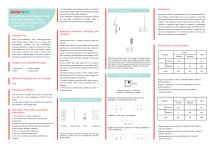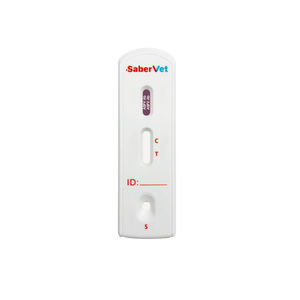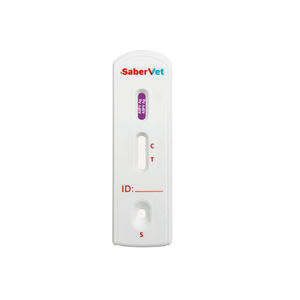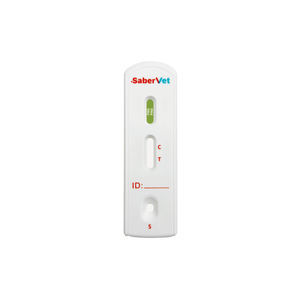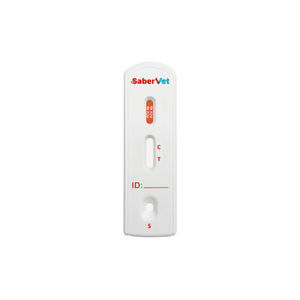
- Laboratory
- Laboratory medicine
- Rapid infectious disease test
- Hangzhou Antigenne Technology Co. Ltd
- Company
- Products
- Catalogs
- News & Trends
- Exhibitions
Rapid infectious disease test SaberVetveterinaryfor cattlevirus
Add to favorites
Compare this product
fo_shop_gate_exact_title
Characteristics
- Applications
- for infectious diseases
- Application field
- veterinary
- Patient type
- for cattle
- Micro-organism
- virus
- Sample type
- urine, nasal, saliva, mucus
- Format
- cassette
Description
Fever: elevated body temperature, usually over 40°C.
Nasal secretion: initially clear watery nasal mucus, which then turns viscous or even purulent.
Cough: persistent dry cough.
Dyspnea: rapid and difficult breathing, sometimes accompanied by wheezing.
Inflammation of the nasal passages: redness and swelling of the nasal passages, which may become ulcerated and crusted.
Reproductive symptoms (reproductive IBR)
Abortion: abortion may occur in pregnant cows following infection, usually in the second trimester.
Inflammation of the reproductive tract: Includes vaginitis, endometritis, and orchitis.
Eye symptoms (conjunctivitis type IBR)
Conjunctivitis: redness and tearing of the eyes, which can lead to corneal ulcers in severe cases.
Systemic symptoms
Malaise: loss of energy and appetite.
Decrease in milk production: decrease in milk production of dairy cows.
Transmission route
Direct contact: spread through contact with secretions and excretions (such as snot, saliva, urine, milk, etc.) of infected cows.
Airborne transmission: The virus can be transmitted through airborne droplets, especially in confined and poorly ventilated environments.
Vertical transmission: Pregnant cows can pass the virus to their fetuses through the placenta.
Sexual transmission: through the semen of infected bulls.
Indirect transmission: through contaminated feed, drinking water, equipment, personnel and means of transportation.
Clinical diagnosis
Clinical symptoms: preliminary diagnosis based on typical respiratory symptoms and medical history.
Laboratory tests:
Virus isolation: isolate the virus from nasal secretions, eye secretions, fetal tissues, etc.
Exhibitions
Meet this supplier at the following exhibition(s):

Other Hangzhou Antigenne Technology Co. Ltd products
Livestock
Related Searches
- Blood rapid diagnostic test
- Rapid lateral flow test
- Immunoassay rapid diagnostic test
- Cassette rapid diagnostic test
- Virus rapid diagnostic test
- Serum rapid diagnostic test
- Plasma rapid diagnostic test
- Infectious disease rapid diagnostic test
- Whole blood rapid diagnostic test
- Rapid respiratory infection test
- Urine rapid screening test
- Bacteria rapid diagnostic test
- Rapid feces test
- Clinical rapid diagnostic test
- Nasal rapid diagnostic test
- Obstetrical/gynecological rapid test
- Rapid oral flu test
- Dog rapid test
- Coronavirus rapid diagnostic test
- Laboratory rapid diagnostic test
*Prices are pre-tax. They exclude delivery charges and customs duties and do not include additional charges for installation or activation options. Prices are indicative only and may vary by country, with changes to the cost of raw materials and exchange rates.


